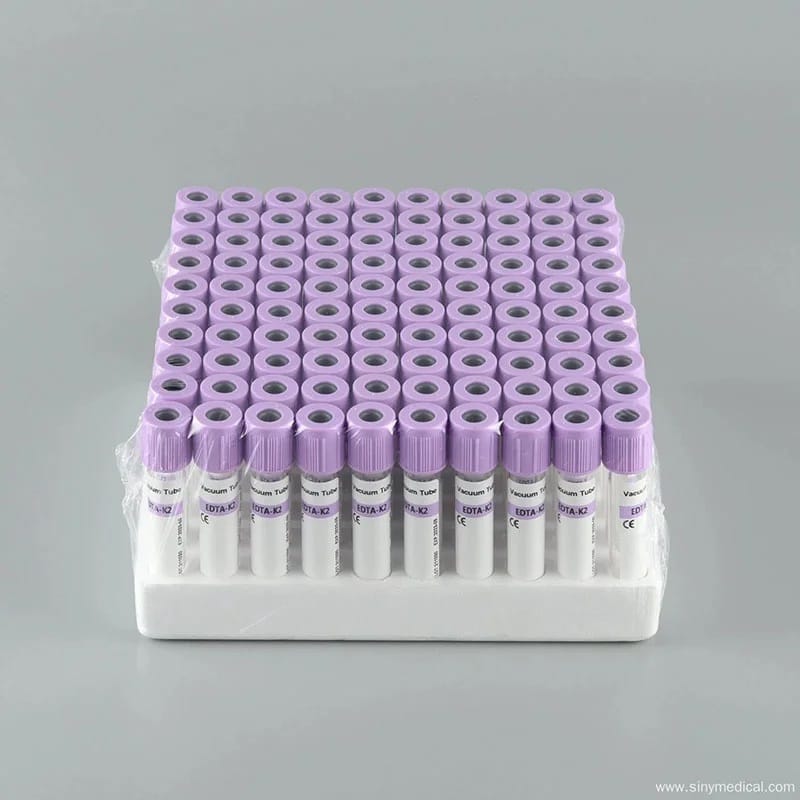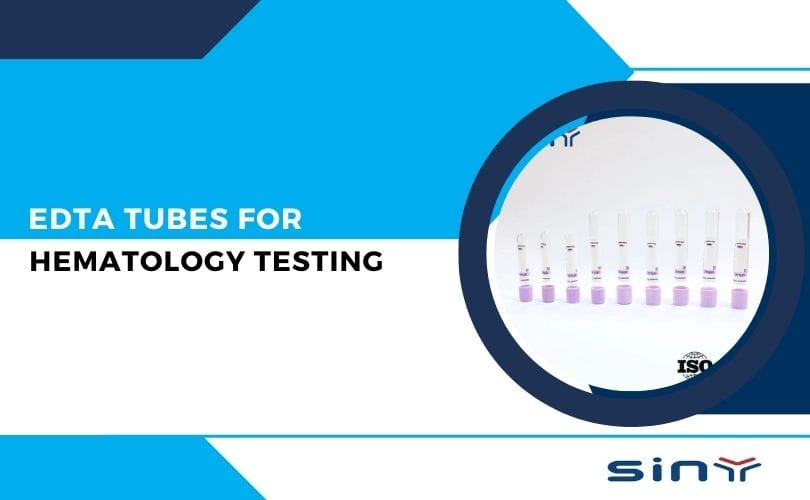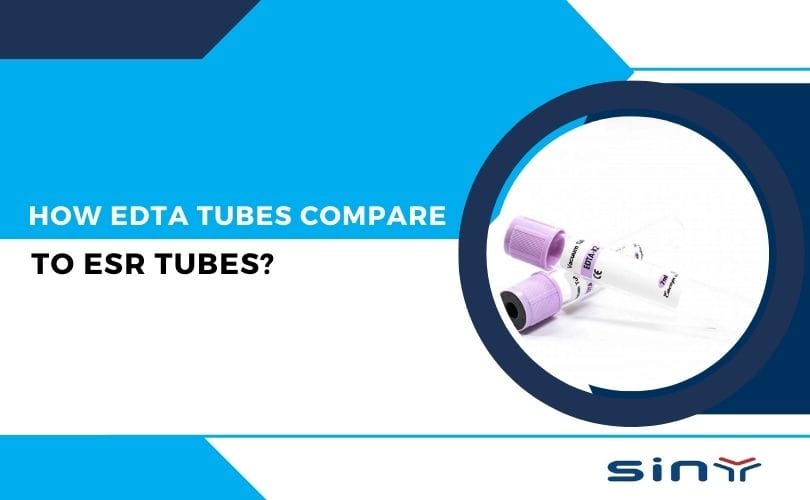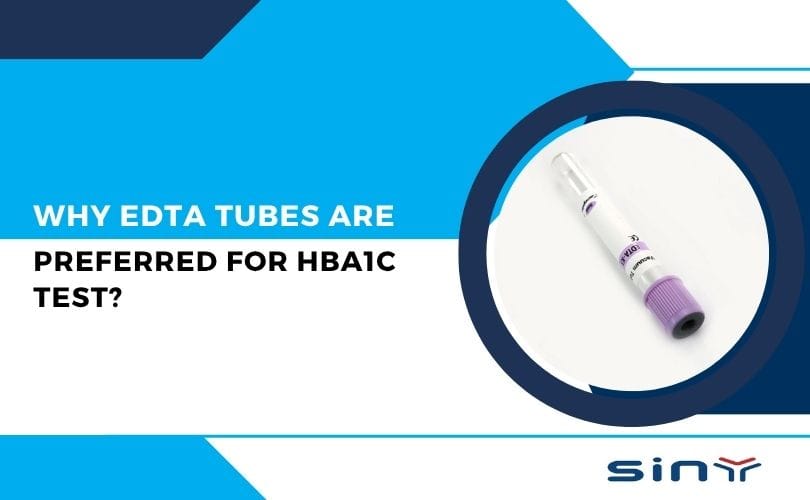When it comes to collecting and preserving blood samples, precision and sample integrity are non-negotiable. That’s where EDTA Non-Vacuum Blood Collection Tubes come in.
These tubes are manually filled, meaning they don’t use vacuum pressure to draw blood. Instead, a syringe is used to inject the sample directly into the tube. And what makes them so special? They contain EDTA (Ethylenediaminetetraacetic acid)—a powerful anticoagulant that helps keep blood from clotting during testing.
You’ll often spot these tubes with a purple or lavender cap, a color that immediately signals their use in hematology tests. From complete blood counts to blood smears, these tubes are workhorses in any medical lab.
Definition and Structure of EDTA Non-Vacuum Tubes
An EDTA Non-Vacuum Blood Collection Tube is a plastic tube pre-loaded with an EDTA anticoagulant—commonly K2EDTA or K3EDTA. Unlike vacuum tubes, it does not rely on negative pressure. Instead, blood is manually injected into the tube using a syringe. The tube typically includes a polypropylene body, a color-coded cap (usually purple), and a dry or liquid EDTA reagent.

Compared with vacuum tubes, non-vacuum tubes are not sealed under negative pressure during production. This design allows more control over the amount of blood collected and reduces the risk of hemolysis or collection failure due to unstable pressure.
What Is EDTA and How Does It Work?
EDTA is a chelating agent, meaning it binds to calcium ions in the blood. Why does that matter? Well, calcium is a key player in the blood clotting process. By removing calcium, EDTA effectively halts coagulation, keeping the blood in a fluid state ideal for testing.
There are two common types of EDTA used in non-vacuum tubes:
K2EDTA (dipotassium ethylenediaminetetraacetic acid)
K3EDTA (tripotassium ethylenediaminetetraacetic acid)
We’ll get into the differences between the two shortly, but both are designed to preserve blood cells in their natural state for accurate analysis.
To get deeper insights into the technical aspects of EDTA and its application in clinical tubes, check out What is an EDTA Tube?
Key Components of an EDTA Non-Vacuum Tube
Let’s break it down:
1. Tube Material
Usually made of medical-grade plastic (often polypropylene), these tubes are both lightweight and durable.
2. Color-Coded Cap
Typically purple or lavender, this instantly identifies the tube as an EDTA-based collector.
3. EDTA Anticoagulant
This can be in powder or liquid form, pre-loaded in the tube. When blood is added, it mixes with the EDTA to prevent clotting.
4. Label Area
Most tubes come with a writable label area for identification and tracking.
Visit this purple top blood collection tube page to view product options in detail.
K2EDTA vs. K3EDTA: What’s the Difference?
Both are excellent anticoagulants, but they each have their perks:
K2EDTA
Often found in spray-dried form
Preferred for hematology testing as it has a minimal effect on cell size and shape
Compatible with most automated analyzers
K3EDTA
Typically in liquid form
Can dilute blood samples slightly, potentially altering results
Sometimes used in molecular diagnostics or trace element studies
Ultimately, it comes down to your lab’s protocols and testing requirements.
Want to know what type your facility should use? Visit EDTA Tubes for Blood Collection for guidance and product specs.
Applications: Where EDTA Non-Vacuum Tubes Shine
These aren’t just “nice-to-have” tubes. They’re absolutely essential in a variety of medical scenarios:
Complete Blood Count (CBC)
Red and white blood cells, platelets, hemoglobin—EDTA keeps them intact and unclotted.
Peripheral Blood Smear
By preserving cellular morphology, EDTA tubes ensure accurate microscope evaluation.
Blood Typing and Cross-Matching
Critical in transfusions, EDTA ensures sample purity.
Molecular Tests (Selective)
Some DNA extraction and PCR protocols allow for EDTA-preserved samples.
To browse the full product category, check out EDTA Tubes Category
Vacuum vs. Non-Vacuum Tubes
| Feature | EDTA Non-Vacuum Tube | Vacuum Blood Collection Tube |
|---|---|---|
| Blood Draw Method | Manual (syringe) | Automated (vacuum pressure) |
| Volume Control | High (manual control) | Fixed by vacuum settings |
| Hemolysis Risk | Lower due to gentle transfer | Slightly higher due to suction |
| Cost | Slightly cheaper | Slightly more expensive |
| Ideal For | Pediatrics, geriatrics, rural settings | High-volume hospital labs |
| Sample Integrity | Excellent for hematology | Excellent when properly handled |
More details on product sourcing are available on Siny Medical’s Made-in-China profile
Final Takeaway
Whether you’re a lab tech, nurse, or clinic owner, knowing how and when to use EDTA Non-Vacuum Blood Collection Tubes can make a world of difference. They offer precision, flexibility, and safety, especially in settings that require manual control over blood collection.
If you’re sourcing high-quality tubes, we recommend browsing the full collection over at the official EDTA Tube Website. You’ll find options tailored for every need, from pediatric use to large hospital settings.
Still have questions? Reach out via the contact page, and the experts will guide you.
FAQs
1. Are EDTA Non-Vacuum Tubes more accurate than vacuum tubes?
Both are accurate when used correctly. Non-vacuum tubes give better control, especially for delicate veins or fieldwork.
2. Can they be used for biochemistry tests?
Nope. EDTA interferes with calcium, magnesium, and other values—so stick to hematology.
3. Are they compatible with analyzers?
Yes, as long as the volume and handling match the analyzer’s specs. Always check manufacturer guidelines.
4. How do I pick between K2EDTA and K3EDTA?
Go with K2EDTA for most hematology tests. Use K3EDTA only if your protocol specifically calls for it.
5. What’s the shelf life?
Unopened: 18–24 months. After opening, store with care. Once blood is added, test within 2 hours or refrigerate.






